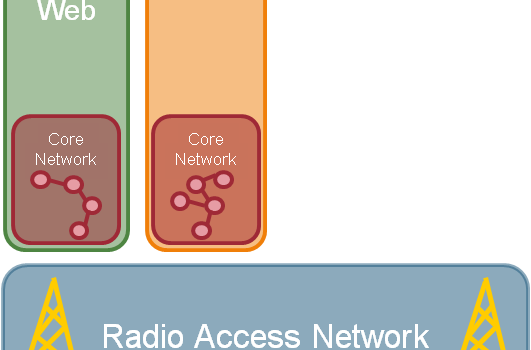
Net-neutrality and the verticalization of the core network
Category : Pulse
Net neutrality does not allow to differentiate traffic. In the US the FCC matches radio access with fixed access. The truth is the state of broadband technology is different and radio spectrum is much scarcer.
FCC seems to say with net neutrality that in the pipe in which mobile operators offer Internet they cannot prioritize services or provide any different treatment. This regulation is perceived as the killer of many “new revenue streams” that operators and vendors have dreamt about with QoS, zero-rating, sponsored content etc.
Something interesting is that FCC does not forbid that in a different pipe voice communications get differential treatment (like VoLTE calls) or in another pipe emergency calls will be prioritized in case of congestion (like VoLTE emergency calls).
The hidden detail is that if you have three people in an LTE network, one doing a VoLTE call, one doing a VoLTE emergency call and one browsing all these three communications go over IP protocol and are transmitted with the same technique over the radio, but the base station (so the box near the antenna of the operator) will prioritize ones against others by giving them more capacity to transmit changing scheduling etc.
 Where’s the concept of pipe? The pipes here are connections to different core networks represented by an APN, they get different IP Addresses (technically this is not a must) and the traffic goes in different tunnels (GTP). Looking at bits and bytes, they are sent in the same way over the radio. So let’s reformulate net-neutrality: Traffic that goes into different core networks can be treated differently, traffic that goes into the same core network cannot.
Where’s the concept of pipe? The pipes here are connections to different core networks represented by an APN, they get different IP Addresses (technically this is not a must) and the traffic goes in different tunnels (GTP). Looking at bits and bytes, they are sent in the same way over the radio. So let’s reformulate net-neutrality: Traffic that goes into different core networks can be treated differently, traffic that goes into the same core network cannot.
If operators want to differentiate traffic they just have to carry it through different core networks. For example, if an operator provides a video service with content from video partners zero-rated on mobile, they shall split that traffic from the main Internet traffic through a different core network than the standard Internet connection.The result would be what I am calling the verticalization of the core network and is an opportunity for mobile operators to provide extra value and differentiate.

Until now this type of verticalization is easier said than done but NFV/SDN enable having multiple core networks so the only challenging step is splitting the traffic in pipes. Having a device sending in several pipes is done for VoLTE at chipset and its not possible to build it as an app because there is a lack of programmability of networking in the device. The same happens on the base station. At some point, we might need more SDN concepts in those too. If both would expose more capabilities and allow for control (from the app in the device, from the operator in the base station) we would see a round of technical innovations triggered by net-neutrality and not just the court and lawyers innovations, which are now in the roadmap.
Verticalization is an opportunity since an operator that deploys a good NFV/SDN management and orchestration setup can operate efficiently several target specific core networks and open its network capabilities to provide differentiation. If you want to read more about NFV Management and Orchestration you ca
Verticalization is also a risk since services which traditionally had been on top of the core network may see value in deploying their own core network and just partner with mobile operators for the radio (As I think Google FI should do here ) .
